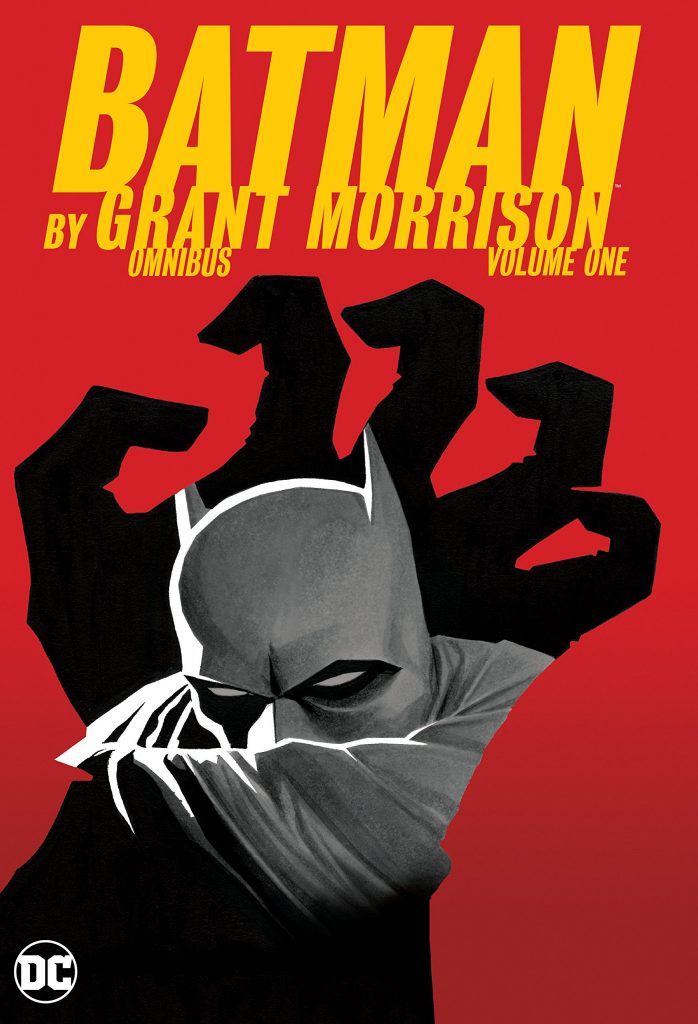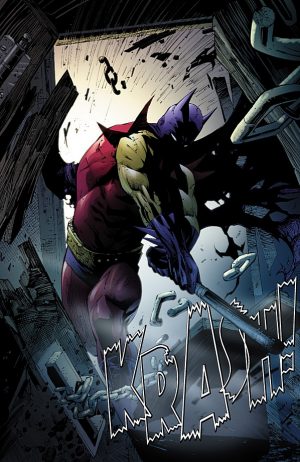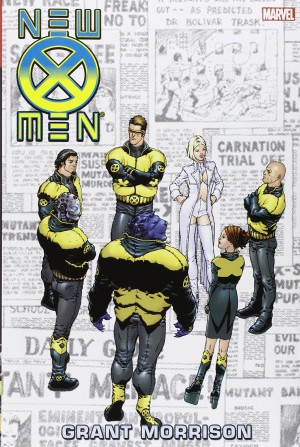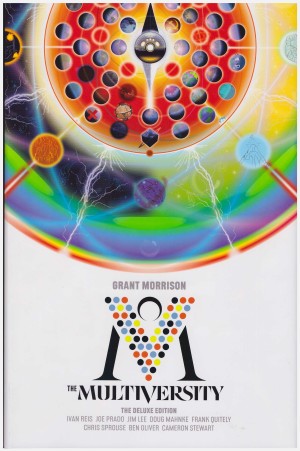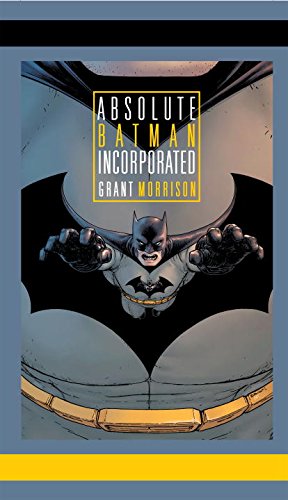Review by Frank Plowright
When Grant Morrison began writing Batman, initially submitting a treatment for fifteen issues, neither he nor fans suspected that over eight years he’d create a character-defining run. Part of the reason it extended further is his idea of taking every previous version of Batman as canon, so resurrecting an entire world that had been closed off for years. Instead of viewing Batman travelling though time or organising doppelgangers in other countries as embarrassing reminders of simpler times, Morrison embraced the nuttiness and layered it with his own innovation and eccentricity.
Morrison’s work was good when presented as Batman and Son, The Black Glove and Batman R.I.P., but the opportunity to read everything between two covers reveals his extraordinary ambition, and how cleverly everything has been plotted. One over-arching villain is responsible for almost everything that occurs in these 672 pages. They’re mentioned early, and several times, but not truly seen until the final fifty pages, and having them be an obscurity from a single old Batman comic (reprinted in The Black Casebook) was an audacious move. Of course, there are diversions along the way, not least the opening gambit of Batman’s previously unknown son, extremely capable and extremely snotty.
It was one of several elements some longstanding Batman fans objected to, along with his undergoing a mental breakdown before reaching enlightenment. It clashed with the ultra-rational and always in control image, but was valid in story terms. Not without foundation, some of Morrison’s other work has been accused of being wilfully obscure, and making sense in his head, but not on the pages. It’s been the downside of one of the greatest creative imaginations to work in comics. However, other than a few hallucinogenic experiences open to interpretation, almost everything is made clear. You have to pay attention to detail and throwaway comments, but what you want to know is there. Morrison’s dialogue doesn’t always cultivate an authentic voice – an overwritten, florid version of the Joker is tiresome – and he feels his way into Batman with some slightly weaker earlier stories based on tremendous ideas. Perhaps most importantly overall, Morrison rescues Bruce Wayne, treating him as a man rather than a bumbling shell for Batman.
Morrison’s vision was realised by a succession of DC’s finest artists. Are the all-action pages of Tony S. Daniel (sample art) better than the ornate delicacy of J.H. Williams III? Does Lee Garbett or Andy Kubert’s naturalism outshine John Van Fleet’s photo referenced precision? They’re all very good at what they do, and you’ll know yourself whose style you prefer. Ryan Benjamin’s art is more a throwback to a 1990s style, and not as pleasing, but his contribution runs to less than 3% of the pages.
This is a clever, creative, engrossing and unpredictable run of Batman stories, almost all extremely well drawn, and key is that it can be re-read and reveal new nuances. Anyone who just wants the single Batman Omnibus on their shelf need look no further.
